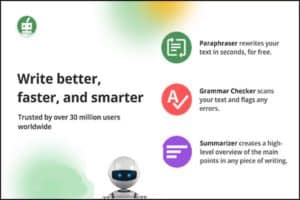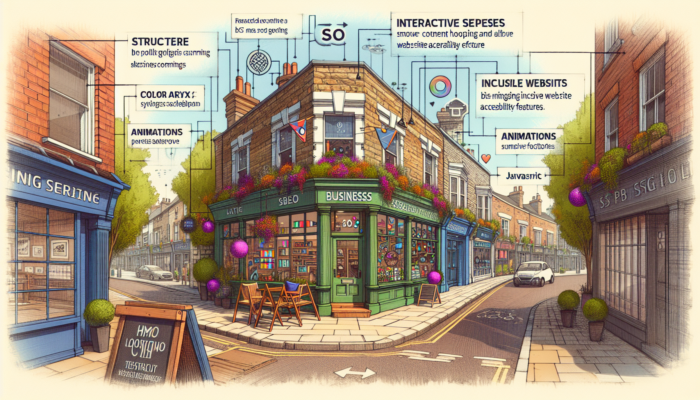Table of Contents
ToggleMaster the Essentials of Adwords PPC for Unmatched Success in Digital Marketing
Uncover How Adwords PPC Functions and Its Integral Mechanisms

Adwords PPC, recognized as Pay-Per-Click advertising through Google Ads, stands as a pivotal tool in the realm of digital marketing. This innovative advertising model allows businesses to place bids on keywords that are directly related to their offerings, ensuring that their advertisements appear prominently in search engine results pages (SERPs). Advertisers incur costs solely when users engage with these ads by clicking on them, hence the term “Pay-Per-Click,” which highlights the cost-effectiveness and targeted nature of this advertising method.
The operational dynamics of Adwords PPC hinge on a complex bidding system wherein multiple advertisers compete for premium ad placements. With each search inquiry, Google assesses bids along with the relevance of the advertisements using sophisticated algorithms to determine which ads will be displayed. This evaluation incorporates both financial considerations and qualitative factors, such as ad quality and relevance, to maintain a level playing field among advertisers, thus facilitating fair competition in the digital advertising landscape.
Within the expansive universe of digital marketing techniques, Adwords PPC integrates flawlessly into comprehensive strategies aimed at boosting traffic, driving lead generation, and elevating conversion rates. When executed with precision, these campaigns can deliver remarkable returns on investment (ROI), underscoring the necessity of meticulous management and strategic planning to maximize effectiveness.
Key Components to Building a High-Impact Adwords PPC Campaign
To fully harness the potential of Adwords PPC, it is crucial to master its foundational components. The three essential pillars of a successful campaign include targeted keywords, engaging ad copy, and optimized landing pages, all of which work synergistically to drive performance.
Keywords are the cornerstone of any Adwords PPC strategy. Conducting in-depth keyword research enables marketers to identify the precise terms that potential customers are utilizing in their search inquiries. By leveraging tools such as Google’s Keyword Planner, advertisers can gain invaluable insights into search volume and competitive dynamics, thereby guiding them in selecting the most impactful keywords that align with user intent and search behavior.
In addition to keywords, the crafting of persuasive ad copy plays a vital role. Effective ad copy must resonate deeply with the intended audience and compel them to click through to the website. It is essential to create messages that highlight unique selling propositions while aligning closely with user search intent. Engaging in A/B testing to compare different ad copy variations can provide insights into which messages engage audiences most effectively, optimizing click-through rates.
Moreover, landing pages must be meticulously optimized for conversion. Once users click on the ad, they should be directed to a landing page that meets the promises made in the advertisement while ensuring a smooth user experience and clear calls to action. A lack of alignment between the ad and the landing page can lead to increased bounce rates, negatively impacting the overall performance of the campaign and hindering its success.
The Vital Importance of Quality Score in Achieving Adwords PPC Success
Quality Score serves as a critical metric within the Adwords PPC framework, acting as an indicator of ad relevance and performance. Google assigns a score ranging from 1 to 10 based on multiple factors, including the anticipated click-through rate (CTR), the relevance of the ad to the keywords, and the user experience on the landing page.
A high Quality Score can lead to reduced costs per click and better ad placements, making it an essential factor in campaign optimization efforts. To enhance Quality Score, advertisers should focus on aligning the relevance of their keywords with the corresponding ad copy and content on the landing page to create a cohesive user experience.
Additionally, creating tightly themed ad groups composed of related keywords can positively impact Quality Score. By ensuring that each ad group maintains a specific focus, advertisers can tailor their ads to meet user expectations more effectively, resulting in improved engagement and interaction with the ads.
Furthermore, continuously monitoring and optimizing ad performance is crucial. This involves analyzing key metrics, such as click-through rates and conversion rates, allowing advertisers to make data-driven adjustments that enhance the overall efficacy of the campaign and drive better results.
Unlock Advanced Techniques for Superior Adwords PPC Optimization

Boost Ad Performance with Strategic Implementation of Ad Extensions
Ad extensions represent a powerful feature within Adwords PPC that can dramatically enhance ad visibility and user engagement. By providing additional information to potential customers, these extensions make ads more informative and appealing, increasing the chances of user interaction.
There are various types of ad extensions, including site link extensions, call extensions, and location extensions. Site link extensions allow advertisers to link to specific pages on their website, guiding users to relevant content and improving their overall experience. By offering multiple links, advertisers can present diverse options to searchers, thereby increasing the likelihood of clicks and conversions.
Call extensions are particularly beneficial for businesses that rely heavily on phone inquiries. Including a clickable phone number in the ad allows potential customers to reach out directly, which can lead to higher conversion rates as users can immediately connect with the business.
Location extensions are especially advantageous for local businesses, providing users with directions and contact information. This feature enhances local visibility and improves click-through rates by ensuring that users can quickly access pertinent information about nearby services.
Incorporating ad extensions into an Adwords PPC strategy not only improves ad ranking but also reduces costs per click, making them essential tools for effective campaign optimization and enhanced performance.
Maximize Campaign Success with Precision Ad Scheduling Techniques
Ad scheduling, often referred to as dayparting, is a strategic approach to optimizing Adwords PPC campaigns by determining the most effective times for ad visibility. Understanding when the target audience is most active can significantly enhance ad performance and overall return on investment (ROI).
Advertisers can identify peak performance periods by analyzing historical data, which allows for more strategic budget allocation. For instance, if data shows that users are more inclined to convert during weekends, adjusting bids to increase visibility during these periods can drive potential sales and improve overall campaign success.
Additionally, ad scheduling facilitates precise targeting. Advertisers can customize their messaging based on the time of day, crafting ads that resonate with users’ immediate needs and behaviors, leading to better engagement and interaction.
Employing dynamic ad scheduling can further refine targeting strategies, where different ads are shown at specific times of the day. This advanced level of optimization ensures that ads reach the right audience precisely when they are most likely to engage, significantly enhancing the overall effectiveness of Adwords PPC campaigns.
Transform Your Campaigns with Smart Bidding Automation Techniques

Smart Bidding represents an advanced automated bidding strategy offered by Google Ads that utilizes machine learning to optimize ad performance in real-time. This feature is particularly beneficial for those managing Adwords PPC campaigns, as it saves time while simultaneously enhancing results.
Smart Bidding encompasses several strategies, including Target CPA (Cost Per Acquisition), Target ROAS (Return on Ad Spend), and Maximize Conversions. Each strategy leverages historical data and contextual signals to automatically adjust bids, ensuring that ads are displayed at the most advantageous moments for maximum impact.
For instance, Target CPA focuses on acquiring conversions at a predetermined cost, while Maximize Conversions aims to achieve the highest possible number of conversions within a specified budget. This level of automation is invaluable, especially for advertisers managing large campaigns with numerous ad groups and keywords, allowing for improved efficiency and effectiveness.
To fully leverage Smart Bidding, it is crucial to gather sufficient data for Google’s algorithms to analyze effectively. This requires keeping campaigns active, enabling the system to learn and optimize accurately. As Smart Bidding continually adapts to performance metrics, it can significantly enhance the outcomes of Adwords PPC campaigns over time, driving better results and ROI.
Essential Performance Metrics for Assessing Adwords PPC Effectiveness
Understanding Click-Through Rate (CTR) and Its Significance in Performance Evaluation
Click-Through Rate (CTR) serves as a fundamental metric in Adwords PPC that assesses how effectively an ad captures user interest. Calculated by dividing the number of clicks an ad receives by the total impressions (the number of times the ad is displayed), CTR offers valuable insights into the performance and relevance of the ad.
A high CTR indicates that the ad is engaging and relevant to the audience, while a low CTR may suggest the need for adjustments in ad copy, keywords, or targeting strategies. Familiarizing oneself with industry benchmarks for CTR can help advertisers evaluate their performance. Generally, a CTR of around 2% is considered average, although this figure can vary significantly across different industries, emphasizing the importance of contextual performance analysis.
Enhancing CTR can lead to an elevated Quality Score, resulting in reduced costs and improved ad positioning. Strategies to improve CTR include optimizing ad copy to be more compelling, utilizing emotional triggers, and ensuring that the ad aligns closely with users’ search intent to foster engagement.
Regularly tracking and analyzing CTR is critical for ongoing optimization. By identifying patterns and trends, advertisers can make informed decisions to continuously refine their campaigns and drive better results.
Evaluating Conversion Rate as a Key Indicator of Campaign Success
Conversion rate stands as another vital metric that indicates the effectiveness of Adwords PPC campaigns. This metric measures the percentage of users who complete a desired action after clicking on an ad, such as making a purchase or filling out a contact form.
To calculate Conversion Rate, divide the total number of conversions by the number of clicks and multiply by 100. A higher conversion rate signifies that the ad not only attracts clicks but also successfully motivates users to engage in specific actions, reflecting the overall success and efficacy of the campaign.
Improving conversion rates necessitates a comprehensive approach that includes optimizing ad copy, refining landing page design, and enhancing the overall user experience. For instance, if the landing page fails to meet the expectations set by the ad, users may leave without converting, resulting in lower conversion rates and wasted ad spend.
Conducting A/B testing with different landing page designs and offers can illuminate what resonates best with the target audience. Additionally, ensuring that landing pages load quickly and provide a seamless user experience can significantly influence conversion rates, driving better campaign outcomes.
Regular assessment of conversion rates, coupled with actionable insights, empowers advertisers to adjust strategies effectively and achieve superior results from their AdWords PPC campaigns.
Understanding Cost Per Acquisition (CPA) for Effective Budget Management
Cost Per Acquisition (CPA) is a crucial metric within Adwords PPC, representing the average cost incurred to acquire a new customer through advertising efforts. Understanding CPA is essential for effective budgeting and evaluating the feasibility of advertising initiatives, ensuring that marketing efforts align with financial objectives.
To calculate CPA, divide the total cost of the campaign by the number of conversions. This metric provides valuable insights into how much advertisers spend to achieve their marketing goals and aids in forecasting future budgets based on historical performance data.
Effectively managing CPA requires ongoing monitoring and optimization of campaigns. Advertisers may need to reevaluate their keywords, ad copy, or bidding strategies if the CPA exceeds acceptable thresholds, ensuring that campaigns remain cost-effective and deliver desired results.
Establishing a target CPA can guide bidding strategies, helping to ensure that the campaign stays within budget while pursuing optimal results. Automated strategies such as Target CPA in Google Ads can streamline this process, facilitating real-time adjustments based on performance metrics to maximize campaign effectiveness.
By focusing on CPA management, advertisers can ensure that their Adwords PPC campaigns yield results and are financially viable, ultimately maximizing their return on investment and driving business growth.
Crafting Captivating Ad Copy for Adwords PPC Triumph
Create Compelling Headlines That Drive Clicks and Conversions
Developing effective headlines is a critical component of successful Adwords PPC campaigns. As the first element users encounter, headlines must capture attention while succinctly conveying the core message of the ad.
Formulating engaging headlines is essential to incorporate relevant keywords that align with the target audience’s search intent. This practice not only enhances ad relevance but also positively affects Quality Score. Using numbers, posing questions, or appealing to emotions can significantly increase the captivation factor of headlines.
For instance, instead of a generic headline, opting for “Get 50% Off Your First Order Today!” creates a sense of urgency and encourages clicks. Conducting A/B testing with various headline options can help identify which versions perform most effectively, allowing for continual optimization of ad copy.
Moreover, clarity and informativeness within headlines are paramount. Given that Google Ads enforces character limits, every word must be impactful and contribute to the overall message. Emphasizing clarity and benefit-driven language can entice users to engage further with the ad and click through to the landing page.
Craft Descriptions That Inspire User Engagement and Drive Action
The description line of an ad is equally crucial in persuading users to take desired actions. Ad descriptions should complement the headline by providing additional context and reinforcing the value proposition presented in the ad.
When crafting descriptions, it is essential to highlight key benefits, address potential pain points, and include a clear call to action (CTA). Phrases such as “Shop Now,” “Learn More,” or “Get Started Today” guide users toward the next steps they should take, enhancing the likelihood of conversion.
Incorporating relevant keywords into the description can further enhance visibility and relevance. However, it is critical to maintain a natural flow while avoiding keyword stuffing, which can detract from the overall message and diminish user engagement.
Emotional appeal can also amplify the effectiveness of ad descriptions. Phrases that resonate with users’ desires or needs—such as “Transform Your Home Today”—can elicit stronger responses, leading to increased engagement and higher conversion rates as users relate to the message on a personal level.
Seamlessly Integrate Keywords into Ad Copy for Maximum Visibility
Incorporating keywords into ad copy is fundamental to the success of AdWords PPC campaigns. These keywords should accurately reflect what potential customers are searching for, aligning with their needs and intents to improve ad performance.
Effective keyword utilization entails strategically inserting keywords into ad copy while ensuring they remain contextually relevant. The primary keyword should be prominently featured in the headline and seamlessly integrated into the description, enhancing the ad’s alignment with search queries and improving click-through rates and Quality Scores.
Moreover, using variations and synonyms of primary keywords can help broaden the ad’s reach. This approach allows the ad to attract a wider audience while maintaining relevance and engagement, making it more competitive in the digital advertising landscape.
Lastly, ongoing keyword research remains essential. As consumer behaviors and trends evolve, staying current on relevant keywords ensures that ad copy remains impactful and effective, keeping pace with the rapidly changing digital environment.
Discover Real-World Success Stories of Adwords PPC Implementation
Local Adwords PPC Campaigns Fuel Small Business Growth
Small businesses can attain extraordinary growth through targeted Adwords PPC campaigns, especially when focusing on local search strategies. A notable case study involves a local coffee shop that executed a well-structured Adwords campaign designed to attract customers in its vicinity.
The coffee shop successfully engaged users searching for coffee in their area by employing location-based keywords and carefully refining geo-targeting settings. The campaign featured compelling ad copy that highlighted unique offerings, such as artisanal brews and a cozy ambiance, effectively appealing to local patrons and enhancing its appeal.
The result was a significant surge in foot traffic and sales for the coffee shop. By meticulously analyzing data on clicks and conversions, the coffee shop refined its ad strategy, adjusting bids according to peak hours and customer behaviors. This case exemplifies how local businesses can effectively leverage Adwords PPC for substantial growth and enhanced visibility in their communities.
E-commerce Success Achieved with Product Listing Ads
An e-commerce retailer specializing in outdoor equipment successfully harnessed the power of Adwords PPC by utilizing Product Listing Ads (PLAs). These ads enabled the retailer to showcase products with images, pricing, and descriptions directly in search results, capturing user attention effectively.
By optimizing product feeds and targeting relevant keywords, the retailer experienced a remarkable increase in click-through rates and conversions. The visual appeal of PLAs significantly outperformed traditional text ads, leading to heightened user engagement and interaction levels.
In addition, the retailer implemented dynamic remarketing strategies, targeting users who had previously visited their site without converting. This strategic approach resulted in a higher return on ad spend, highlighting the effectiveness of PLAs in e-commerce settings and underscoring their potential for driving sales and customer acquisition.
Effective B2B Lead Generation Through Adwords PPC
A B2B software company successfully generated high-quality leads through a meticulously crafted Adwords PPC campaign that focused on industry-specific keywords and tailored ad messaging. By thoroughly understanding the pain points of their target audience, the company developed ads that directly addressed their needs and concerns.
Utilizing lead form extensions allowed potential customers to submit their information directly through the ad, streamlining the conversion process and enhancing user experience. This innovative strategy resulted in a substantial increase in qualified leads while reducing the cost per acquisition, showcasing the effectiveness of well-structured campaigns.
The company optimized its budget by consistently monitoring campaign performance and adjusting targeting parameters, achieving an impressive ROI. This case study highlights the remarkable potential of Adwords PPC in the B2B sector and emphasizes the importance of aligning ad strategies with audience needs to drive meaningful results.
Frequently Asked Questions About Adwords PPC: Addressing Common Queries
What is the Typical Cost Associated with Adwords PPC Advertising?
The costs linked to Adwords PPC can vary significantly based on several factors, including keyword competitiveness, ad quality, and the bidding strategies employed by advertisers. To manage spending effectively and optimize overall campaign costs, advertisers have the flexibility to set daily budgets tailored to their financial objectives.
Can Adwords PPC Be Effective for My Industry?
Adwords PPC is versatile and can yield positive results across a wide range of industries. The key to success lies in crafting campaigns that are tailored to specific audiences and utilizing relevant keywords that resonate with their needs and search behaviors.
What Are the Best Practices for Managing Adwords PPC Campaigns Effectively?
Best practices for effectively managing Adwords PPC campaigns include conducting thorough keyword research, optimizing ad copy to drive engagement, utilizing ad extensions for enhanced visibility, and regularly monitoring performance metrics to facilitate continuous improvement and adjustment of strategies.
How Can I Improve My Quality Score?
To enhance your Quality Score, focus on boosting ad relevance, optimizing landing pages for a superior user experience, and conducting A/B testing on ad copy to identify the most effective messaging that resonates with your target audience.
What is the Difference Between CPC and CPA?
Cost Per Click (CPC) refers to the amount that advertisers pay each time someone clicks on their ad, while Cost Per Acquisition (CPA) measures the cost incurred to acquire a new customer through conversions, providing insights into the effectiveness of advertising efforts.
What Are Ad Extensions and Why Are They Important?
Ad extensions enhance the visibility of ads by providing additional information, such as phone numbers, links to specific pages, and location details. These enhancements can improve click-through rates and overall ad performance, making them valuable tools for advertisers.
How Can I Track the Success of My Adwords PPC Campaign?
Tracking success involves monitoring key metrics such as CTR, conversion rates, and CPA using the reporting tools available within Google Ads. These tools facilitate data-driven decision-making, allowing advertisers to optimize campaign performance effectively.
Why is Ad Copy Crucial in Adwords PPC Campaigns?
Ad copy is pivotal as it directly influences click-through rates and conversions. Engaging and relevant ad copy captures user attention and encourages action, making it an essential component of successful PPC campaigns.
What is Smart Bidding in Adwords PPC?
Smart Bidding is an automated bidding strategy within Adwords PPC that employs machine learning to optimize real-time bids based on various factors, enabling advertisers to achieve their objectives more efficiently and effectively.
How Often Should I Review My Adwords PPC Campaign?
Regular reviews are essential for achieving campaign success. Monthly assessments are generally recommended, with more frequent evaluations during active campaigns to optimize performance and make necessary adjustments to strategies as conditions change.
Connect With Us on Facebook
The post Adwords PPC Strategies for Maximizing Your ROI appeared first on Ezi Gold.

















2 Comments
The intricacies of Adwords PPC that you’ve highlighted really resonate with my own experiences in digital marketing. It’s fascinating how the bidding system not only influences ad visibility but also encourages advertisers to be more strategic in their keyword selection. In my last campaign, focusing on long-tail keywords significantly improved our click-through rates, proving that relevance paired with smart bidding can yield impressive results.
Reading about Adwords PPC got me thinking—it’s almost like a digital bidding war for the most coveted real estate! Just when I thought my only competition was my neighbor fighting me for the best Halloween decorations, here comes Google Ads turning everyday businesses into auctioneers.